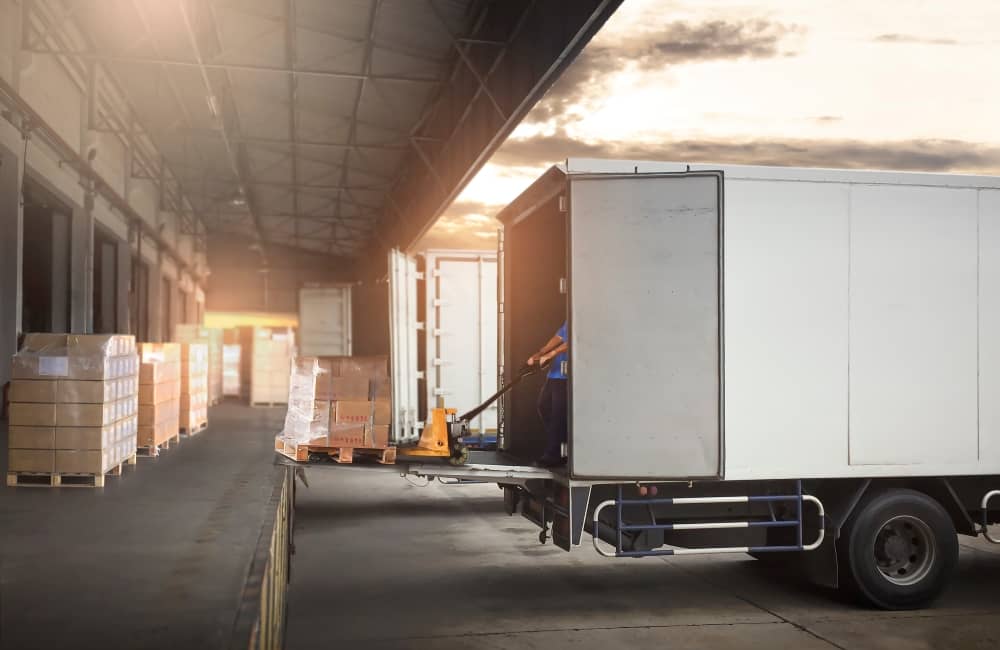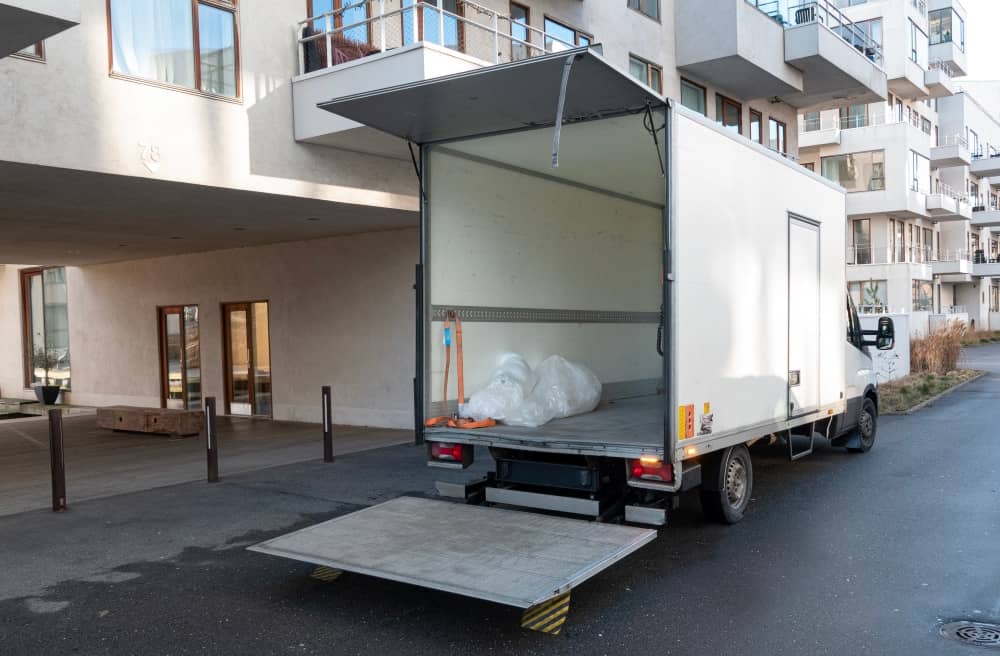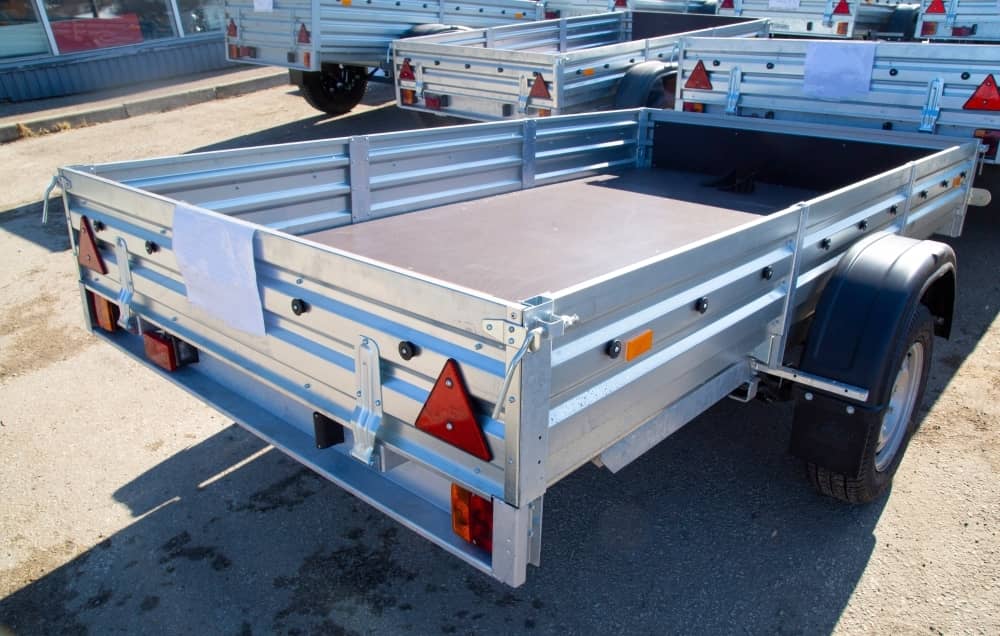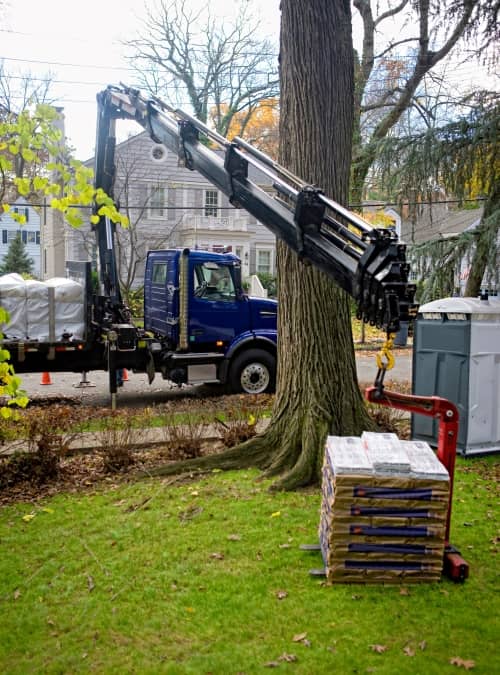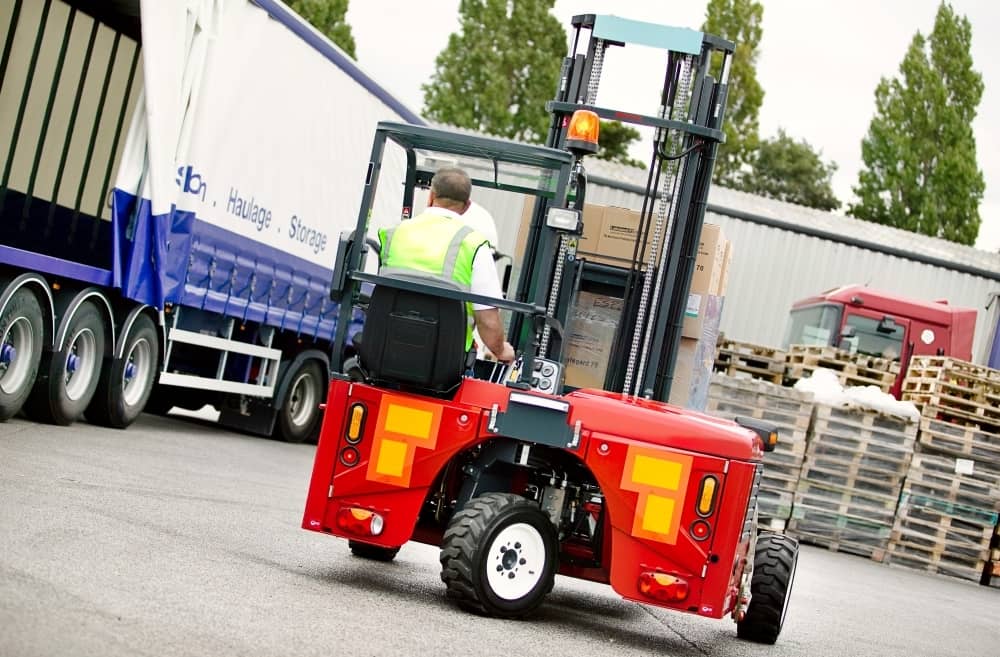It is no secret that flooring is a heavy product that takes up the room when transported. Now more than ever, freight costs and wait times are critical ingredients for a flooring retail business to consider to keep customers happy. Liaising between freight companies and customers is a part of our daily operation, and we see it as our duty to check in with freight companies to keep customers updated.
We have our own set of variables we measure against a freight provider to ensure they are everyone’s best option to have products arrive on time and damage free. On rare occasions, delays and damage can occur, but this is kept to a minimum due to the reputable providers we use and all the options we disclose to customers.
This blog covers the different freight options available for flooring and considerations to make when choosing freight types.
Tailgate Delivery
Tailgate delivery uses a truck with a hydraulic tail lift, usually accompanied by a manual pallet jack. When unloading, the flooring pallet gets wheeled onto the extended tailgate, which is lowered to the ground. Once on the ground, the pallet is wheeled off the tailgate. Tailgate delivery is separate from a tilt tray truck used in the towing industry, which is not designed to transport flooring.
Pros
- It saves money on hand unloading and is the most efficient delivery for flat surfaces
- Delivery is more time efficient if you have a suitable driveway and surface
- Tailgate deliveries require experienced and professional operators and drivers
- A safe way to ensure your flooring gets delivered smoothly and on time
- The product is enclosed in a truck that has a solid roof helping protect your flooring from the elements
Cons
- Because of the weight of a pallet of floorboards, you need a flat, level and hard surface (driveway/street & not gravel) to unload to. If there is a slight incline/decline or uneven ground, the pallet jack under the weight cannot safely come off the tailgate
- A tailgate load cannot exceed 999 kg for the operator’s safety
- Tailgate providers can be hard to find in some rural areas, or people may experience time delays with busy operators
- Narrow streets and driveways with low-hanging trees can provide extra obstacles for a typically tall and wide truck.
- Due to health and safety reasons, most tailgate companies will not do hand unloading
Ute and Trailer Hand Unloading Service
As the name suggests, anyone with a ute or trailer can undertake this versatile freight service. Typically flooring is forklift loaded onto, and hand unloaded off the ute/trailer.
Pros
- The ute/trailer can go anywhere, including challenging inclines and angles
- The customer can undertake this if they are willing to hand unload and have access to the right vehicle and trailer
- This can be a cheaper delivery method depending on the flooring type and how much there is
- The product gets delivered exactly where you want it
Cons
- Smaller local operators can be hard to find
- Hand unloading
- Multiple trips may be needed if there is more than one pallet
- The boxes must weigh under 25KG to be hand unloaded safely
- Hand unloading increases the hourly labour rate significantly
Hiab Truck
Also known as a crane truck uses a hydraulic crane secured on the back of the truck. Straps/chains are attached around/under the pallet load and safely lifted to a flat surface. The product is left packed and strapped to the pallet.
Pros
- Some high-load-rated crane trucks can lower pallets over fences and get them to places other delivery methods cannot
- It can be as efficient as tailgate delivery on a flat accessible drop-off surface
- A more common service in rural areas
Cons
- Hiab truck operators can be hard to find
- Load capacities and capabilities vary according to the truck and crane setup
- Price can increase rapidly with the use of a hiab
- The truck needs a lot of space to make a delivery successfully
Truck With a Mounted Forklift
This rare setup is composed of a long open flatbed truck with a custom bracket on the back which houses a mobile forklift that can lift itself onto the back of the truck, where it is secured. On delivery, the typically three-wheeled forklift lowers itself to the ground. Once on the ground, it operates as a conventional forklift capable of unloading pallets onto various spaces, inclines and surfaces. Most mobile truck-mounted forklifts have the bonus of bigger wheels and tires with more clearance and traction to reach difficult areas.
Pros
- Quick delivery
- Can drive into smaller areas
- Can operate on a slope
- Reduces the need for hand unloading
- A more common service in rural areas
Cons
- Load requirements need to be checked on the forklift
- Often a rare and hard-to-book service
- Weather and product damage can be an issue with an open flatbed truck
- It can be a very costly way of delivering
- Forklift trucks are in high demand in metro areas and are hard to secure for customers
Depot or Supplier Pickup
If the customer chooses to and the supplier allows it, they can waive delivery costs by picking up their product directly from the supplier or freight depot.
Pros
- The customer will save on freight costs
- The customer can pick up the product at a convenient time, which is often much quicker than any truck delivery
Cons
- The customer will need a ute or trailer to transport their product
- The customer will need to hand unload the products themselves on their end
- Internal transfer fees still apply if the customer picks it up from a freight depot
Interstate Transfers Through Rail & Haulage
For example, a Perth customer might want a pallet of a specific flooring that needs to be sent from Sydney. Typically, the product will be transported by train or heavy haulage to a depot for the bulk of the journey. One of the above methods is used from the depo or train station to the customer. Haulage and rail pricing increase or decreases rapidly depending on the weight and shape of the pallet load. To learn more about interstate transport and moving home items interstate, check out the guides by Mayfair Removals.
Pros
- Smaller and lighter products will be more affordable to transport
- You get the exact product you want, even if it has a long way to go
Cons
- 1.5m+ boards will typically span over two pallets (oversize), costing a lot more in freight
- Recently flood damage to railway lines between eastern states and Western Australia has caused rail freight price increases
How Freight Gets Calculated
Working out how a freight company will charge as a customer can be confusing, to say the least. Below simplifies how freight costs can be incurred when sending flooring products.
Some freight companies charge by pallet space, capped at 999kgs. Meaning 1500mm and 1800mm long product is charged as 1.5 or 2 pallet spaces, and 2400mm product is charged at an oversized pallet rate.
These are the measurement Parameters:
- standard – 1200 x 1200
- double – 1500/1800 x 1200
- oversized 2400 x 1200
- Some freight companies charge by the weight of pallets. Meaning that each additional box of flooring increases the cost.
- Some freight companies combine pallet space with the weight of the pallet.
Further additional costs include:
- Residential delivery fee
- Tailgate delivery fee

Expert Insights From Dean Billett
28+ Years of flooring industry experience
To avoid confusion, we generally give customers a freight cost if delivered to their house and offer a free pickup option from the warehouse where possible.
Freight issues become most apparent when considering sending a product from the eastern states to Western Australia. Quite often, customers will prefer to choose a similar product still sold by us but supplied in WA to avoid huge freight costs.
Time Delays
We couldn’t only write an article on freight without mentioning the elephant in the room: Time Delays.
Although we still communicate with the customer, they must deliver promptly and safely once the freight company picks up a product. This is why we are picky with freight companies.
Reasons for freight time delays include:
- Illness of drivers – particularly COVID-related over the past few years
- Driver shortages as the economy changes
- Time of year – Black Friday & Christmas sale times are a busy time of year
- Availability of tailgate trucks in the area
- Living in rural areas where drop-offs are less frequent means customers will wait longer for a truck to fill up and travel to the area
- Unreputable freight companies, on rare occasions, may misplace freight, in which case they need to run a depot search to locate the missing products
The Online Flooring Store’s Difference
To ensure the smoothest transition with freight, we have and do the following:
- Freight companies, most, if not all, will clearly state in their contracts and clauses that they take no responsibility for product losses or damage. We are insured for this at the Online Flooring Store and recommend checking retailers’ and trades insurance.
- From start to finish, we communicate with the customer about where their freight is and any possible delays. We forward any information directly from the freight company to the customer.
- We educate the customer on all the above points to help them choose the right freight choice for their situation, considering all points.
- The Online Flooring Store has a list of due diligence requirements a freight company must adhere to for an ongoing freight arrangement to be successful.
- We use small local operators where possible. We know each other on a first-name basis, and it’s been much easier to contact them when needed.
The Current Freight Market in Australia For Retail Business
For retail businesses across Australia in 2022, organising freight has been more complicated than usual. Generally, freight companies have been busier and, in some cases, overrun with work. As a result, both freight prices and wait times were more likely to increase. So far, in 2023, we feel things are returning to what can be considered “normal” for freight companies. At this time, we are out of the busy time of year, and there is less of a shortage of drivers. Many companies find residential deliveries more challenging and limit the amount they are willing to do as they have recently been in a situation where they can be more selective with the work they choose to take on.
In the last eight months alone, fuel levies have doubled, driving freight costs up dramatically. There has also been a decline in government rebates for fuel, contributing to rising costs. This added cost generally transfers to the customer and has caused the price of everyday items to skyrocket.
Over the last few years, natural disasters and COVID in Australia have also significantly impacted freight costs.
In Conclusion
Flooring is one of the heaviest products to be transported, with a typical order of 60 – 100 square meters weighing anything from 800 – 1000kgs. Flooring will always need to be transferred from point A to point B, so customers need to be informed about their best options.


